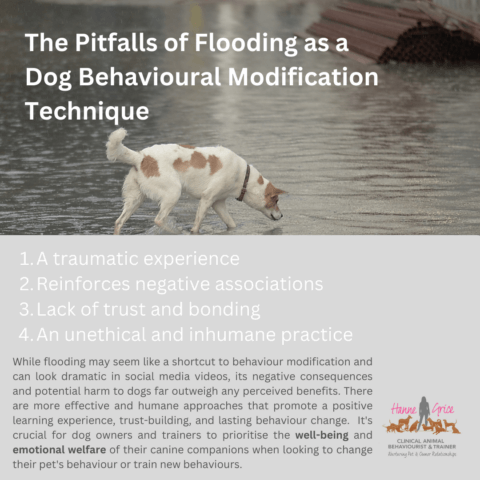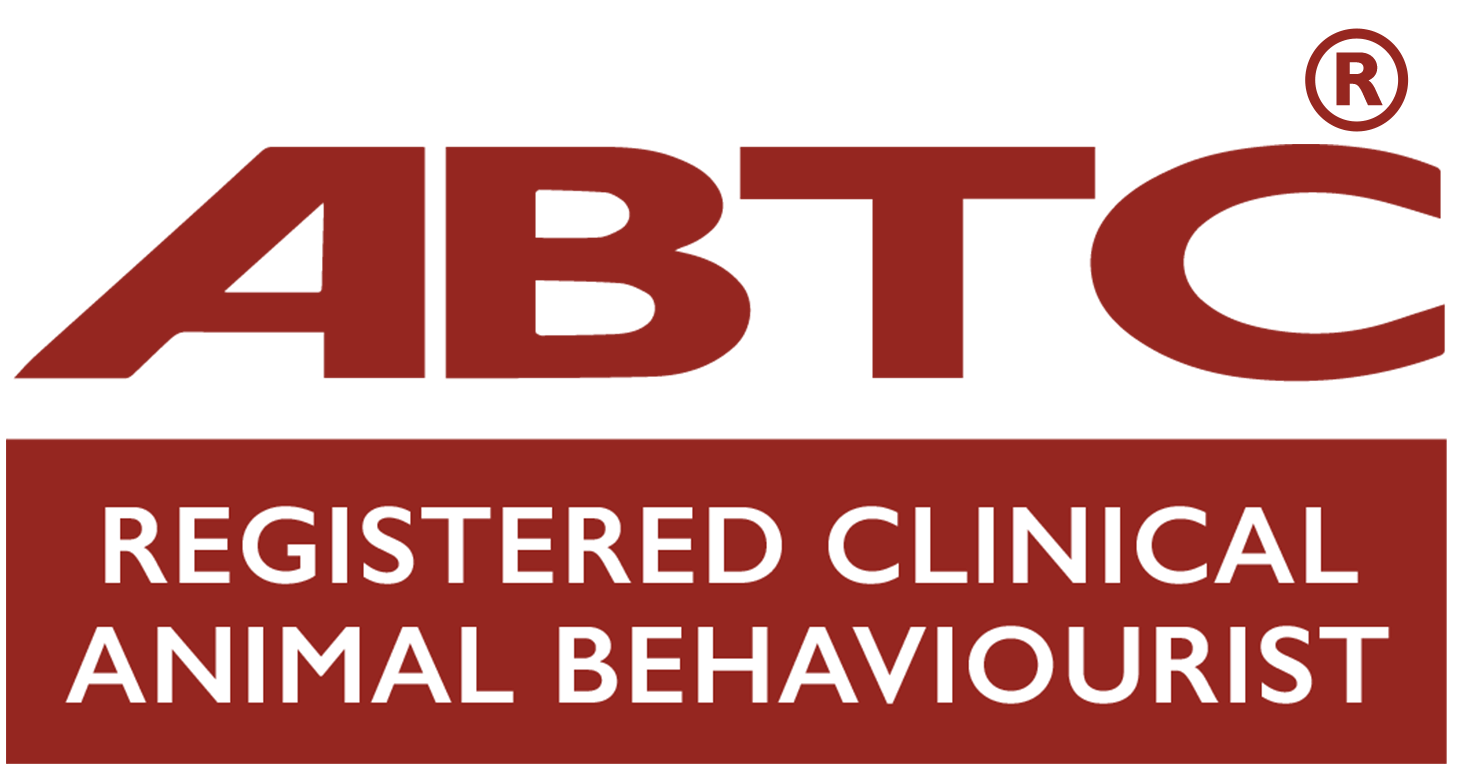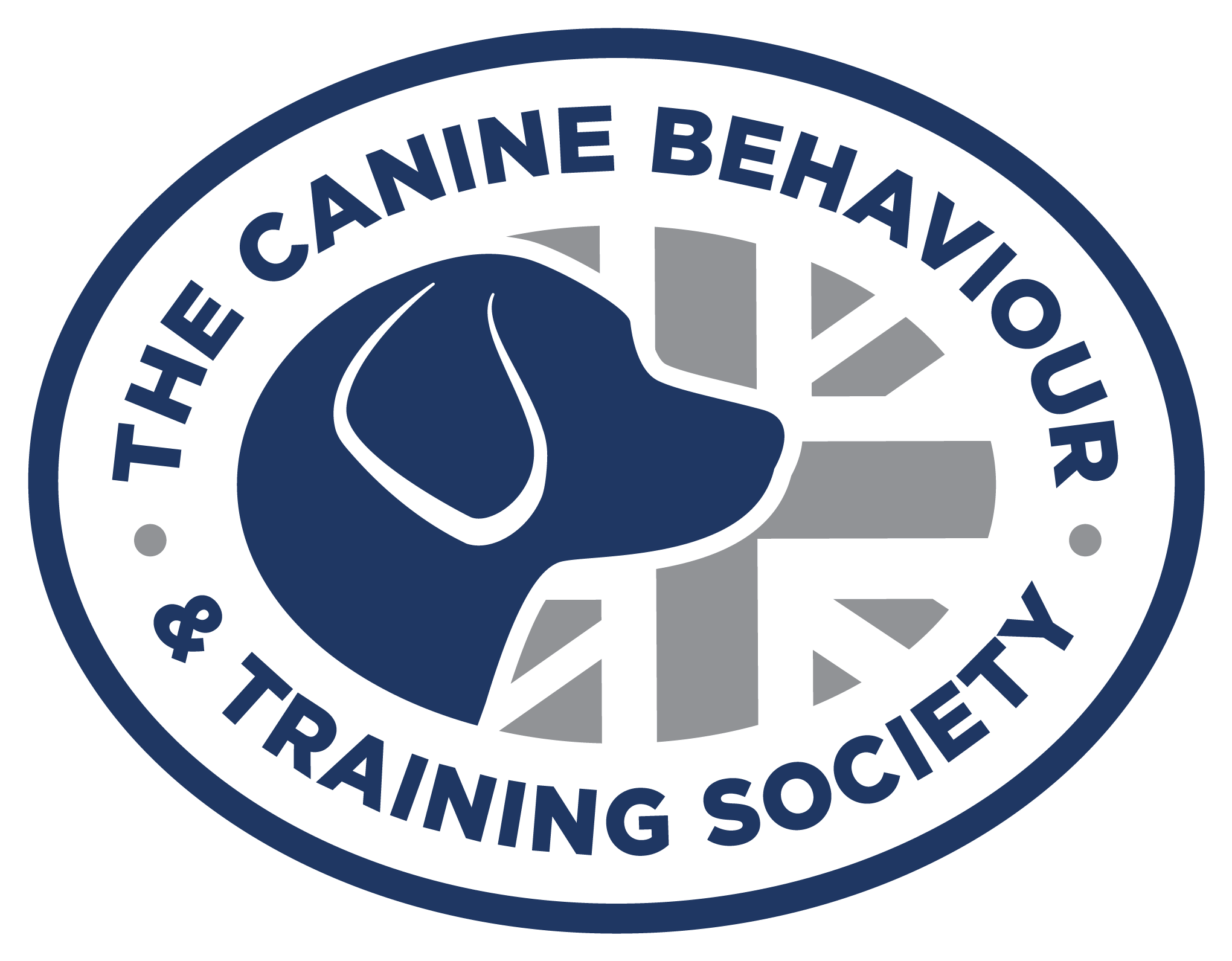Flooding is a controversial dog behavioural modification technique that involves exposing a dog to an overwhelming amount of a feared stimulus in an attempt to eliminate its fear or anxiety response. This approach aims to achieve quick results by forcing the dog to confront its fears head-on. Such methods are often seen on social media platforms like TikTok and Instagram as the ‘before’ and ‘after’ can look dramatic! However, flooding is not a recommended approach due to its potential negative consequences and the availability of more effective and humane alternatives.
Understanding Flooding and Its Mechanism

Flooding is based on the assumption that if a dog is forced to endure a fear-inducing stimulus for an extended period, the dog will eventually become desensitised and overcome their fear. For example, a dog with a fear of loud noises or other dogs, might be subjected to prolonged exposure to thunderstorms/fireworks or being in an enclosed space with other dogs. The idea is that the dog will eventually become exhausted and, in theory, “give up” on exhibiting the fear response.
Why Flooding Is Not Recommended?
- Traumatic Experience: Flooding can result in a traumatic experience for dogs. Being overwhelmed by a fear-inducing stimulus without any opportunity to escape or seek comfort can lead to extreme distress, anxiety, and potentially long-lasting psychological harm. Such traumatic experiences can worsen the dog’s behaviour, leading to further fear-related problems.
- Reinforces Negative Associations: Flooding may reinforce negative associations between the feared stimulus and the dog’s emotional response. Rather than extinguishing fear, it can intensify the dog’s fear and anxiety, making the behavioural problem worse. The dog may associate the fear-inducing stimulus with feelings of helplessness, leading to an increased fear response in the future.
- Lack of Trust and Bonding: Flooding disregards the importance of building trust and a positive bond between the dog and their caregiver. Forcing a dog into overwhelming situations can erode the trust the dog has in their owner, which may hinder future training efforts and damage the human-animal bond.
- Ethical Considerations: Flooding raises ethical concerns as it prioritises achieving quick results over the well-being and emotional welfare of the dog. It disregards the principles of positive reinforcement, which emphasise reward-based training and creating a safe and supportive environment for the dog.
More Effective and Humane Approaches
When it comes to using more effective and humane approaches, there are several. These include:
- Counterconditioning: Counterconditioning is a widely recommended technique that aims to change the emotional response to a feared stimulus through positive associations. By pairing the feared stimulus with something the dog finds enjoyable (e.g., treats, play, sniffing, or calmness), the dog learns to associate the once-feared stimulus with positive experiences, gradually reducing anxiety and fear.
- Desensitisation: Desensitisation involves gradually exposing the dog to a milder version of the feared stimulus and progressively increasing the intensity or proximity over time and at the dog’s individual pace. This gradual approach allows the dog to develop confidence and learn to cope with the fear-inducing stimulus without becoming overwhelmed.
- Positive Reinforcement: Positive reinforcement training focuses on rewarding desired behaviours rather than punishing unwanted behaviours. This method relies on rewarding the dog for displaying the desired behaviour, such as sitting or staying calm, while ignoring the stimulus or redirecting unwanted behaviours. Positive reinforcement fosters trust, strengthens the human-animal bond, and helps create a positive learning environment.
While flooding may seem like a shortcut to behaviour modification, its negative consequences and potential harm to dogs far outweigh any perceived benefits. The use of more effective and humane approaches, such as counterconditioning, desensitisation, and positive reinforcement, promotes a positive learning experience, trust-building, and lasting behaviour change.
It is crucial for dog owners and trainers to prioritise the well-being and emotional welfare of their canine companions when seeking behavioural modification techniques. If you are in need of training and behavioural support, then check out the list of registered and assured practitioners listed under the directory of the Animal Behaviour and Training Council (ABTC).
References:
- Overall, K. (2013) Manual of clinical behavioral medicine for dogs and cats. Elsevier Health Sciences
Learn more about our classes

Get Hanne's Book
Playing With Your Dog will help any dog owner work out the games that are best suited for their pet to play throughout his life, from puppyhood to old age. The book also shares some tricks for all ages, group activities, and recommended toys that dogs will enjoy.

























